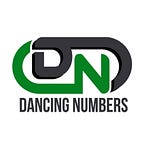VAT in QuickBooks: A Comprehensive Guide
In the realm of finance and accounting, managing Value Added Tax (VAT) efficiently is paramount for businesses of all sizes. When it comes to simplifying VAT management, QuickBooks emerges as a powerhouse, offering a myriad of tools and features tailored to meet the diverse needs of businesses. In this comprehensive guide, we delve into the intricacies of VAT in QuickBooks, exploring setup procedures, optimization techniques, and expert tips to streamline your tax management effortlessly.
Understanding VAT in QuickBooks
Navigating the complexities of VAT in QuickBooks requires a solid understanding of its fundamental principles and functionalities. Let’s delve into the key aspects:
Getting Started with VAT Setup
Before diving into the intricacies of VAT management, it’s essential to set up your QuickBooks account correctly to accommodate VAT requirements. This involves configuring tax settings, specifying VAT rates, and customizing invoices to reflect VAT charges accurately.
Learn to Setup Vat in QuickBooks
Streamlining VAT Transactions
Once the setup is complete, leveraging QuickBooks’ intuitive interface, you can effortlessly record VAT transactions, including sales, purchases, and expenses. By categorizing transactions appropriately, you ensure compliance while gaining valuable insights into your financial operations.
Automating VAT Calculations
Gone are the days of manual calculations and tedious spreadsheet work. QuickBooks automates VAT calculations, eliminating errors and saving valuable time. Whether you’re generating VAT reports or reconciling accounts, QuickBooks’ automation capabilities streamline the entire process.
VAT Optimization Techniques
Maximizing the benefits of VAT in QuickBooks entails employing optimization techniques to enhance efficiency and accuracy. From leveraging integrations with third-party tax software to utilizing advanced reporting features, there are numerous strategies to optimize your VAT management workflow.
Implementing VAT in QuickBooks: Best Practices
Customizing VAT Preferences
Tailoring VAT preferences to align with your business’s unique requirements is crucial for seamless integration. By customizing settings such as tax codes and VAT reporting periods, you ensure precision and compliance in VAT management.
Utilizing VAT Reporting Tools
QuickBooks offers robust reporting tools specifically designed to facilitate VAT compliance and analysis. From VAT summary reports to detailed transaction reports, accessing real-time insights empowers informed decision-making and regulatory adherence.
Learn to Use Vat Feature in QuickBooks
Integrating VAT with E-commerce Platforms
For businesses operating in the e-commerce sphere, integrating VAT functionality with platforms such as Shopify or WooCommerce is essential. QuickBooks’ seamless integrations ensure seamless synchronization of VAT data, simplifying cross-platform management.
FAQs (Frequently Asked Questions)
How do I enable VAT in QuickBooks?
To enable VAT in QuickBooks, navigate to the settings menu, select “Taxes,” and follow the prompts to set up VAT preferences and rates.
Can QuickBooks automatically calculate VAT?
Yes, QuickBooks automates VAT calculations, ensuring accuracy and compliance with tax regulations.
What are the VAT reporting requirements in QuickBooks?
QuickBooks provides comprehensive VAT reporting tools, allowing users to generate VAT summary reports, detailed transaction reports, and more, to fulfill reporting obligations effectively.
How does QuickBooks handle VAT on imports and exports?
QuickBooks simplifies VAT management for imports and exports by offering customizable tax codes and automated calculation features tailored to international transactions.
Can I integrate QuickBooks with HMRC for VAT filings?
Yes, QuickBooks offers seamless integration with HMRC, enabling users to submit VAT returns directly from the platform, ensuring compliance with regulatory requirements.
Is VAT registration mandatory for all businesses?
VAT registration requirements vary depending on factors such as annual turnover and business activities. It’s advisable to consult with a tax professional to determine your VAT obligations.
Conclusion
In conclusion, mastering VAT in QuickBooks is essential for businesses seeking efficient tax management solutions. By leveraging the platform’s robust features and optimization techniques, you can streamline VAT workflows, ensure compliance, and gain valuable insights into your financial operations. Whether you’re a small business owner or a seasoned accountant, embracing VAT in QuickBooks empowers you to navigate the complexities of tax management with confidence and ease.
